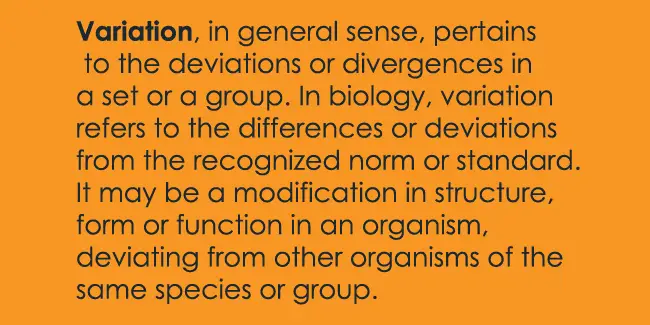
What does variation mean in biology
Definition of variation refers to various differences between biological species and individuals. It is the presence of different individuals due to their genotypic constitution derived from genes, chromosomal recombination, linkage, etc. It is the root of biological evolution and human breeding.
Due to environmental influences and genetic interaction between the type, the performance of the individual phenotype variability populations, environmental, and genetic variation, which is a major factor in biological evolution.

What is the genetic and environmental variation?
The genetic variation describes the difference in DNA between individuals. The two main sources of genetic variation are mutations and the combination of genes that result from sexual reproduction. The processes that direct or eliminates genetic variability is natural selection and genetic drift.
Environmental variation: Those differences in the physical characteristics of animals and plants that manifest by environmental factors and not by the genetic code. Factors such as food availability, hours of sunshine, and temperature can produce it. It can clearly be seen in plants.
Types and examples of variation in biology:
Types are as follows.
- Continuous variation: It manifest by small phenotypic differences, generally quantitative, that affects all the organs and characters of individuals. It affects all the members of the population, giving each one its particular appearance. Example, the color of the hair or the skin of different shades of coloration.
- Discontinuous variation: It is any morphological or functional variation that appears suddenly in one or several isolated individuals of the same generation. It clearly defines differences in a characteristic that can appear in a population. E.g. the appearance of dwarf plants within a variety of normally high size.
Example
- The example in person is hair color, skin color, freckles, blood type, and dimples.
- In animals, there are many examples, such as albino snakes, tigers, elephants, etc., as well as four-legged chickens, two-headed turtles, etc.
- In plants, it involves the alter leaves of carnivorous plants and the growth of flowers that favor insects to tempt plant pollinators.
video overview on variation